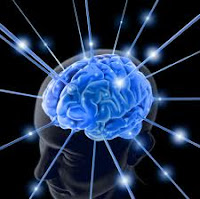

 The new procedure, developed by scientists from the MPI for Biological Cybernetics in Tübingen, accurately maps the activity in primate brains by means of the BOLD-Signal (Blood Oxygen Level Dependent Signal). The combination of electrical microstimulation and FMRT promises more precise insights into brain circuitry and its functional organization, reports Neuron.
The new procedure, developed by scientists from the MPI for Biological Cybernetics in Tübingen, accurately maps the activity in primate brains by means of the BOLD-Signal (Blood Oxygen Level Dependent Signal). The combination of electrical microstimulation and FMRT promises more precise insights into brain circuitry and its functional organization, reports Neuron.Electrical microstimulation has been often used in the last two centuries to demonstrate causal links between neural activity and specific behaviors or cognitive functions. It has also been used for the treatment of several neurological disorders, such as Parkinson's disease.Institute for Biological Cybernetics in Tübingen, have for the first time developed a technique to record brain activity using the blood oxygen level dependent (BOLD) signal, while applying electrical microstimulation to the primate brain.

The researchers found that the spread of activity around the electrode in macaque area V1 is larger than expected from calculations based on passive spread of current, and therefore may reflect functional spread by way of horizontal connections. To support this functional trans-synaptic spread, they also obtained activation in expected projection sites in extra-striate visual areas, demonstrating the utility of their technique in uncovering in vivo functional connectivity maps.
aps.
Use of the microstimulation/MRI technique in conscious, alert primates holds great promise for determining the causal relationships between activation patterns across distributed neuronal circuits and specific behaviors.
This method could also prove useful in understanding and optimizing the method of intra-cranial electrical stimulation in the treatment of neurological disease.
Use of the microstimulation/MRI technique in conscious, alert primates holds great promise for determining the causal relationships between activation patterns across distributed neuronal circuits and specific behaviors.
This method could also prove useful in understanding and optimizing the method of intra-cranial electrical stimulation in the treatment of neurological disease.
No comments:
Post a Comment